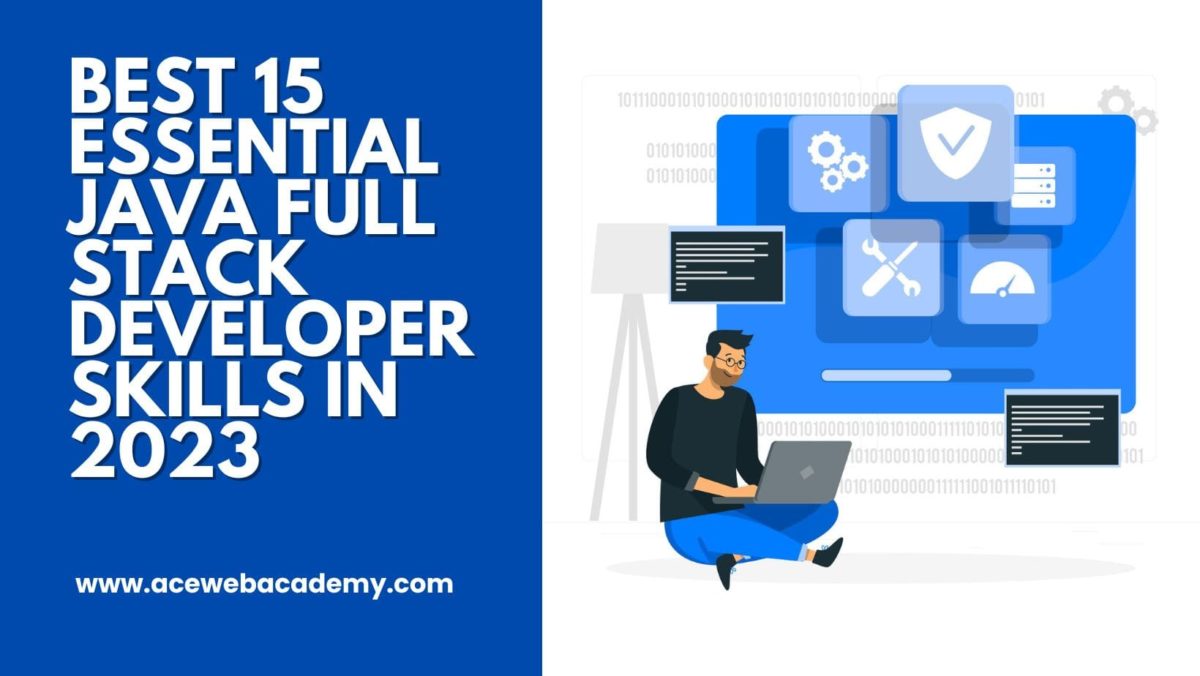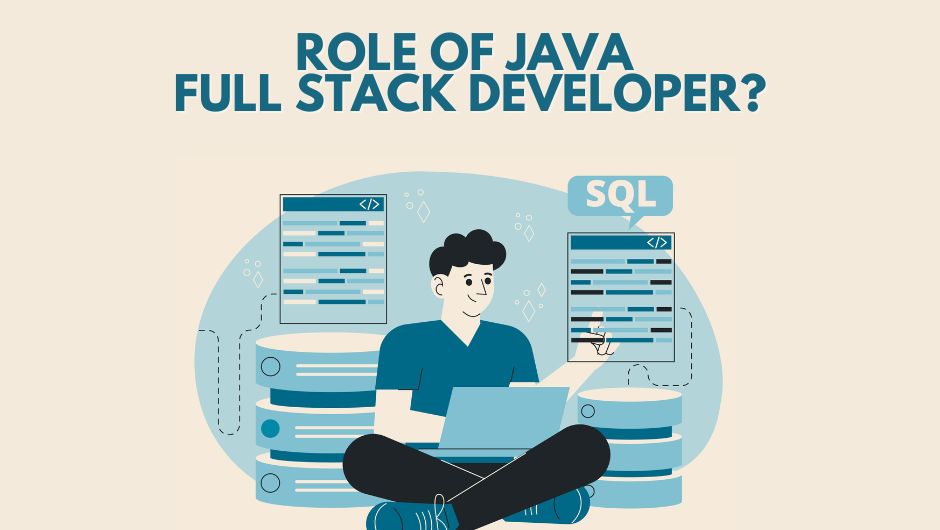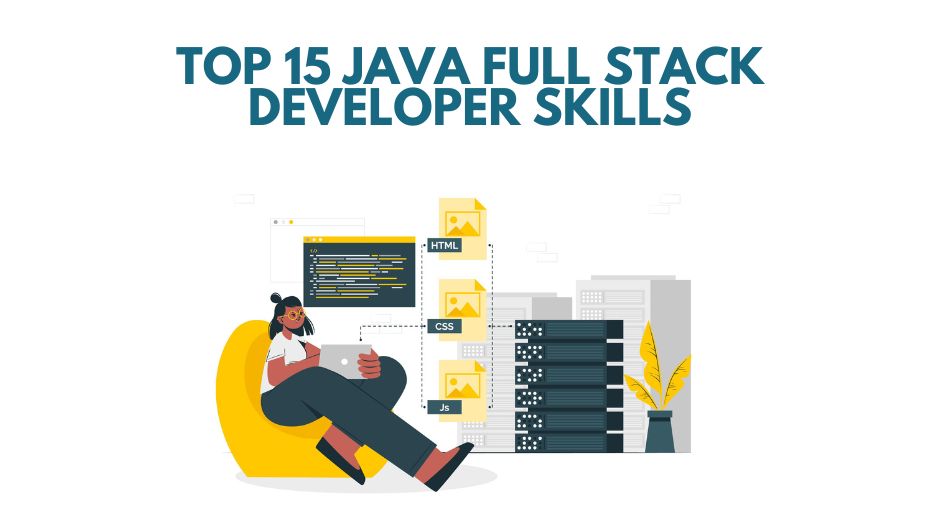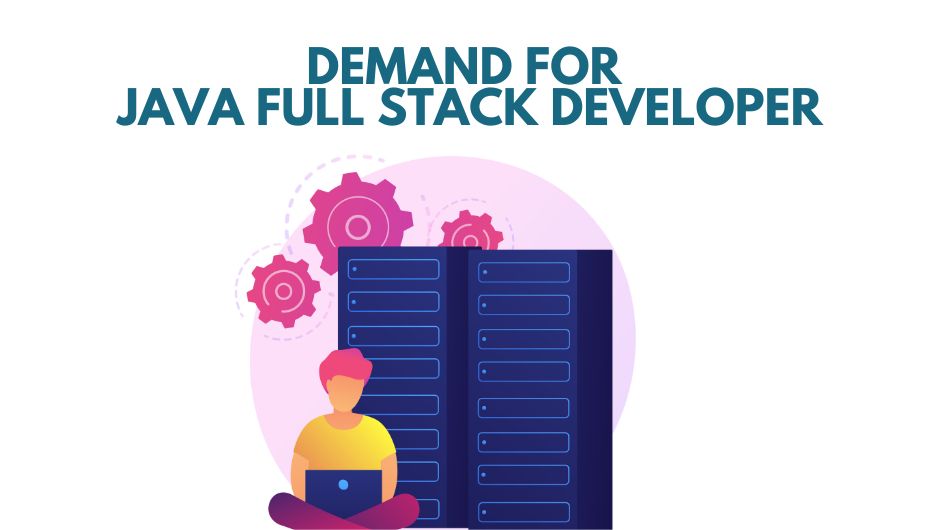-
Class Room Training
Hyderabad
-
Online Training
Join From Anywhere
-
Class Room Training
Hyderabad
-
Online Training
Join From Anywhere
Our Blog
Best 15 Essential Java Full Stack Developer Skills in 2023

Introduction:
In This article you will discover Top 15 Java Full Stack Developer Skills required in 2023 also you will know what it takes to become Java Full Stack Developer, Its Demand and their average salary in India. So Let’s dive Deeper!
Role of Java Full Stack Developer ?

A Full Stack developer is a software engineer who works on both the backend (server side) and the frontend (client side).
A “Full Stack” term can be used in job descriptions and general conversation to prioritise that an applicant is proposed to reveal broader skills, demonstrating themselves as more T-shaped and expert in different areas, as opposed to the notion of the benefit of having a relatively limited engineering skill set for working only in a very specific place.
Depending on the project’s characteristics, Full Stack developers may not be dependable for certain software components.
For example: A Corporation may have a smart Database developer who delves into complicated database-specific logic, a web designer (not a graphic designer) who handles a significant portion of Frontend work, or a DevOps engineer who handles all positioning and maintenance. All of them relieve the Full Stack developer of specific tasks.
A typical Full Stack developer does not work on both aspects equally, particularly in larger firms and teams. Typically, this individual would devote more time to one of the sections (either frontend or backend) while only committing limited time to the other. When we speak of Java Full Stack Developer, we are most likely referring to significantly more exposure to the Java-based Backend.
What exactly is front-end web development?
Front end Web Development is the process of creating the client side of a web application with the user in mind. This approach is carried out by the full stack developer with the goal of creating a website that is simple to use and engage with.
During this procedure, the developer concentrates on the application’s visual elements. It is also the developer’s role in front-end development to guarantee that the website or application functions well. Front-end development is concerned with things like Images, Graphics, Animations, Layouts, Content Organization, Navigation.
What is exactly Backend Web Development?
Back-end Web Development is the process of creating the server side of a website, which visitors cannot view or interact with. The primary goal of back-end development is to make the website interactive and user-friendly. During the back-end development process, developers prioritise:
Creating the code, Database Management, Troubleshooting or debugging the website or application, Interfaces for application programming and Architecture
As a result, front-end and back-end development are separate in terms of the aspects of the internet application that they focus on. However, the two collaborate to create a dynamic and appealing website that provides users with an immersive browsing experience.
So, what are the necessary Java Full Stack Developer abilities? Let’s take it one step at a time.
Top 15 Java Full Stack Developer Skills you Require:

- Git and GitHub
Git is a term that every developer and aspiring developer is familiar with. It is a free and open-source “distributed version control system” capable of handling all of your development needs. It improves the pace and efficiency of small and large-scale projects alike. Developers can use Git to make changes to apps, codes, websites, documents, and other software development resources in an error-free manner. Experienced engineers typically have a GitHub profile, which is required for team work.
Git allows Full Stack Developers to trace every little change to the application codebase. They must be aware of all of the fundamental Git commands and examples. Full Stack Developers that use Git can analyse specific security, productivity, and management options. Full Stack Developers that are familiar with Git can cooperate more effectively with other developers or programmers working on the same project.
- VCS (Version Control System)
Database queries must be created and manipulated by developers. The version control system manages and modifies code control. It allows developers to keep track of the modifications made to the codebase. Git is a free and open-source depository service that can handle all of your development needs. Furthermore, it records changes, removing the need to revert to a previous version. It also expedites updates to codes, webpages, papers, and so on.
Having a GitHub profile allows developers to collaborate as a team and maintain track of the most recent changes made to the codebase using Git commands.
- JavaScript
It is one of the most important Java full-stack developer talents because it facilitates website construction. It is an object-oriented programming language that can operate natively in browsers and servers. It is often used to modify CSS and HTML in order to change content, animate graphics and photos, curate interactive maps, and so on.
- Website design
Full Stack Developers are the software development masterminds. They have extensive experience in both frontend and backend development.
Complete Stack Developers must understand the intricacies of web architecture. Because their major role is to create sophisticated software systems from the ground up, they must understand how to structure code, categorise files, structure data in databases, and execute critical computational operations.
- REST and HTTP
HTTP and REST both serve two distinct purposes. HTTP is the protocol used to facilitate client communication. REST, on the other hand, is an interface between systems that uses the HTTP protocol to collect data or execute various operations (in multiple formats) on the data. As a result, REST functions as a bridge between the front end and the back end.
Because HTTP and REST are critical for Full Stack development, Full Stack Developers must be proficient in both.
- Database Storage
All online applications require a database in which all data is stored. This is done to ensure that developers can later use the data. Database storage needs the usage of a skilled and certified Full Stack Developer who understands relational databases and storage. Full-stack engineers must be database management professionals, able to design, understand, and manipulate database queries. Furthermore, they must be familiar with XML and JSON.
Things a Full Stack Developer must understand about database storage and management:
- Relational and non-relational data characteristics.
- Knowledge about NoSQL databases.
- Understanding of online storage.
- Backend Programming Languages
Backend languages require crucial Java full stack developer skills such as Python, PHP, Java, Ruby, and so on. Developers must be experts at writing code, categorising files, and storing information in databases. He should also be familiar with the technical aspects of site design.
- Databases and Web Storage
A database contains all of the project-related data. It enables many teams to work on the same project while keeping track of progress and changes in the database. These abilities will assist the developer in storing, reading, and changing database data.
- Spring Frameworks
The Spring framework is required for Aspect Oriented Programming (AOP). It includes Spring Boot Boot and Spring Cloud, which simplify Java microservice programming. This is one of the most difficult and important Java full-stack developer skills to master.
- Tools for DevOps (Jenkins, Docker, and Kubernetes)
A Java developer should be knowledgeable with integration, placement, and the function of Jenkins in this process. Developing abilities like Ansible, Docker, Kubernetes, and others is also essential. Experienced Java engineers who implement best coding practices, build environments, and design scripts and guidelines must be proficient in DevOps tools.
- NPM
NPM stands for Node Pack Manager. It is specifically designed to install several modules to assist the node in controlling conflicts. NPM is well-known for its scalability, as it can be used for a wide range of applications, including developing, publishing, and installing node programmes.
- Safety
Because the entire application development process is facilitated by the Internet, each Web Development layer contains vulnerabilities. As a result, security threats may become a growing issue. As a result, every developer must gain a basic understanding of security and the procedures involved in order to perform better as a result of such concerns.
- Personal Qualities
A good Full Stack Developer has a good mix of soft and technical talents. The soft skills of a developer include time management, detail analysis, teamwork, discipline, and the ability to tolerate criticism.
- Mockito and JUnit
Unit testing is one of the abilities required for Java full-stack developers that distinguishes outstanding developers from average ones. A skilled Java programmer will always create unit studies for his code. JUnit and Mockito are two examples of appropriate unit testing skills.
- React or Angular
Developers must be proficient in front-end frameworks such as Angular and React. These are the most in-demand technical Java entire stack developer talents. These JavaScript frameworks have taken the web development process to a new level of innovation. You may have heard of JSP, JQuery, and Servlet. Even said, learning React or Angular is highly recommended nowadays because these frameworks are embedded in the majority of web development projects. As a result, it is one of the most valuable and necessary Java full-stack developer talents.
Demand for Java Full stack developer

The future of full stack development appears to be bright, with huge opportunities and lucrative wage packages. If a full-stack developer can execute mean-stack and DeVos development, they are a valuable addition to an organisation.
Most companies prefer to hire a generalist over a specialist; thus a full-stack developer is near the top of their priority list. The number of tech-inclusive businesses is constantly growing. Even if an organisation isn’t particularly tech-savvy, web development is still required to some level. As a result,
opportunities for full-stack developers exist and will continue to exist.
Java Full Stack Developer Average Salary in India
If you have the necessary skills, let’s look at what a Full Stack Java Developer earns. The national average income for a Full Stack Java Developer in India is INR 6.6 lakhs per year.
The annual salary ranges from INR 2.4 lakhs (as a fresher) to INR 19 lakhs. The pay scale is determined by criteria such as experience and the organisation with which one works. However, skill sets should include both domain and soft skills to help you advance in your profession.
How to land a full stack developer job without a technical background?
Conclusion
As a result, vital Java full Stack developer Skills are a progressive, dynamic, and highly versatile position that appeals to those who are open-minded and T-shaped. Maintaining a low number of steps while remaining motivated and stable in your study. Furthermore, by continuing your career path, you can learn all of the abilities needed to thrive in this profession and discover a plethora of work prospects at every degree of seniority.
Categories
Copyright 2025 © acewebacademy.com. All Rights Reserved. A division of Infasta Soft Solutions Pvt. Ltd.



